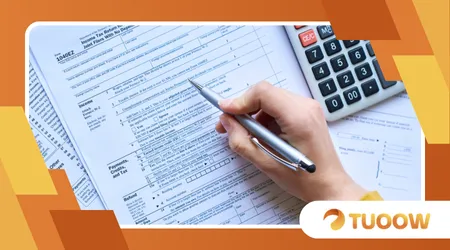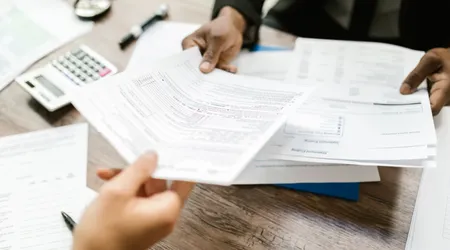Are You Entitled to a Tax Refund in the UK? Find Out Here

The phrase tax refund in the UK sparks curiosity for many Britons navigating the labyrinth of HMRC’s tax system.
Each year, millions overpay taxes, unaware they’re entitled to reclaim funds that could ease financial pressures or fund personal goals.
In 2025, with economic shifts and HMRC’s updated processes, understanding your eligibility for a tax refund in the UK is more crucial than ever.
This guide unpacks who qualifies, how to claim, and why acting swiftly matters.
From PAYE workers to self-employed individuals, we’ll explore real-world scenarios, practical steps, and insider tips to ensure you don’t miss out.
Why let money that’s rightfully yours sit in HMRC’s coffers? Let’s dive into the details and empower you to take control of your finances.
Tax refunds aren’t just bureaucratic windfalls; they’re opportunities to redirect funds toward what matters most be it clearing debts, investing, or treating yourself.
With HMRC processing over 10 million refunds annually, the system is primed to return billions to taxpayers.
This article draws on current 2025 regulations, real-time HMRC updates, and expert insights to demystify the process.
We’ll avoid jargon, focus on clarity, and provide actionable advice, ensuring you leave with a roadmap to reclaim your tax refund in the UK.
Who Can Claim a Tax Refund in the UK?
Eligibility for a tax refund in the UK hinges on overpaying taxes, which happens more often than you’d think.
PAYE employees, for instance, might overpay due to incorrect tax codes. HMRC’s system isn’t infallible mistakes occur when employers report inaccurate earnings or when you switch jobs mid-year.
In 2023/24, HMRC issued over £13 billion in refunds, highlighting how common overpayments are.
Self-employed individuals also qualify if they’ve overpaid on provisional tax estimates.
Unlike PAYE, where tax is deducted automatically, self-employed workers pay based on HMRC’s projections, which can overestimate income.
If your actual earnings fall short, a tax refund in the UK awaits.
Similarly, those who’ve stopped working, moved abroad, or incurred specific expenses (like professional subscriptions) may be eligible.
Consider Jane, a nurse who switched hospitals in 2024. Her tax code wasn’t updated promptly, leading to £600 in overpaid tax.
By checking her payslips and contacting HMRC, she reclaimed the funds within weeks. This example underscores a key point: vigilance pays off. Always review your tax code and payslips for discrepancies.
Another group often eligible includes pensioners. Overpayments can occur when pension income is taxed at a higher rate than necessary.
++ The UK’s Best Charities That Provide Financial Assistance
If you’ve started drawing a pension but still work part-time, HMRC might miscalculate your liability. Checking your annual tax summary is a simple first step to spotting errors.
Students working part-time also frequently overpay. Many earn below the £12,570 personal allowance but are taxed due to payroll oversights.
If you’re in this boat, a quick P60 review could unlock a refund. The key is acting within four years of the tax year’s end HMRC’s deadline is strict.

Common Reasons for Overpaying Taxes
Overpaying taxes feels like lending HMRC an interest-free loan. One major culprit is incorrect tax codes, which dictate how much tax is deducted from your salary.
Codes like 1257L apply to most, but errors say, 1185L can inflate deductions. In 2025, HMRC’s digital tools make checking your code easier via the Personal Tax Account.
Work-related expenses also trigger refunds. If you’re required to buy uniforms, tools, or pay professional fees, you might be entitled to tax relief.
Also read: NHS Repair Costs Triple, Putting Pressure on Health Budget
For example, a construction worker spending £200 annually on safety gear could claim relief, reducing their tax bill or securing a refund.
Leaving the UK mid-tax year?
You might’ve paid tax on income you’re no longer liable for. Expats often overlook this, missing out on hundreds of pounds.
Similarly, if you’ve been made redundant or worked irregularly, overpayments are common due to fluctuating income.
Take Ahmed, a freelance graphic designer. In 2024, he overestimated his income on his Self-Assessment, paying £1,200 too much.
After submitting his final return, HMRC refunded him within a month. His case highlights the importance of accurate record-keeping for self-employed workers.
Part-time workers, especially those juggling multiple jobs, face overpayment risks. Each employer might tax you as if their job is your only income, ignoring your personal allowance.
Requesting HMRC to split your allowance across jobs can prevent this or lead to a refund if it’s too late.
How to Check If You’re Owed a Tax Refund in the UK
Checking your eligibility for a tax refund in the UK is straightforward with HMRC’s online tools. Start with your Personal Tax Account on GOV.UK.
It shows your tax code, payments, and refund status. In 2025, HMRC’s system updates in real time, so delays are minimal.
Your P60 or payslips are goldmines for spotting overpayments. Compare your gross pay to deductions if the math seems off, dig deeper.
For self-employed individuals, your Self-Assessment return is key. Overpaid provisional taxes? HMRC flags this automatically after filing.
Read more: Free Healthcare in the UK: Who is Eligible?
HMRC’s “Check Income Tax” tool estimates your liability for the current year. If you’ve overpaid, it’ll suggest next steps.
For past years, use form R40 (for non-Self-Assessment cases) or contact HMRC directly. Refunds are typically processed within 6–8 weeks.
Don’t rely solely on HMRC to flag overpayments. They’re efficient but not omniscient. Proactively reviewing your records like Jane did ensures you don’t miss out.
If you’re unsure, HMRC’s helpline (0300 200 3300) offers guidance, though wait times can be long.
For complex cases, consider a tax advisor. They can uncover obscure reliefs, like those for travel expenses or capital allowances.
While fees apply, the refund often outweighs the cost. Just ensure they’re accredited by bodies like the ATT or CIOT.
Steps to Claim Your Refund
Claiming a tax refund in the UK is like navigating a well-marked trail follow the steps, and you’ll reach your destination.
First, log into your Personal Tax Account or create one on GOV.UK. Verify your identity using a passport or driving license.
Next, review your tax summary. If HMRC owes you, they’ll often notify you post-tax year (April). For PAYE workers, refunds are typically automatic if overpayments are recent.
Otherwise, submit form R40 online or by post.
Self-employed? File your Self-Assessment early. If overpayments are confirmed, HMRC adjusts your next bill or issues a refund.
Ensure your bank details are updated in your Personal Tax Account for faster payments most arrive within 10 days.
If you’ve left the UK, use form R43 for non-resident claims. Attach proof of departure, like travel documents.
Processing takes longer up to 12 weeks but the payout can be substantial. Always keep copies of correspondence.
Double-check deadlines. You have four years from the end of the tax year to claim. Miss it, and HMRC keeps the money.
For 2020/21 overpayments, the deadline is April 2025 act now to avoid losing out.
Table: Key HMRC Forms for Tax Refunds
| Form | Purpose | Who Uses It | Processing Time |
|---|---|---|---|
| R40 | Claim refund for non-Self-Assessment | PAYE, pensioners | 6–8 weeks |
| R43 | Non-resident refund claims | Expats | 8–12 weeks |
| SA100 | Self-Assessment refund | Self-employed | 4–6 weeks |
Maximizing Your Refund: Tips and Tricks
Think of a tax refund in the UK as buried treasure sometimes you need to dig deeper to maximize it. Claim all eligible reliefs, like those for charitable donations or pension contributions.
These reduce your taxable income, boosting refunds.
Flat-rate expense allowances are a hidden gem. Teachers, for instance, can claim £60–£120 annually for classroom supplies.
Check HMRC’s occupation list for your entitlement. Even small claims add up over four years.
Marriage Allowance is another overlooked perk. If your spouse earns less than £12,570, transfer £1,260 of their allowance to you, saving up to £252 annually.
Backdate claims to 2021 for a larger refund.
Timing matters. File early in the tax year to get your refund sooner. HMRC’s peak period (January–April) sees delays, so beat the rush. Electronic filings are processed faster than paper ones.
Beware of scams. Fraudsters posing as HMRC sent 1.8 million phishing emails in 2024, per HMRC data.
Only use GOV.UK links and never share bank details via unsolicited messages. Protect your refund by staying vigilant.
What to Do with Your Refund
Receiving a tax refund in the UK is like finding an unexpected windfall use it wisely.
Paying off high-interest debt, like credit cards, frees up future income. A £1,000 refund could clear a 20% APR balance, saving £200 annually.
Investing is another smart move. A Stocks and Shares ISA offers tax-free growth.
In 2025, platforms like Hargreaves Lansdown report record ISA contributions, reflecting savers’ optimism. Even £500 can grow significantly over a decade.
Alternatively, bolster your emergency fund. Financial advisors recommend 3–6 months’ expenses.
A £600 refund could kickstart this, providing peace of mind. Apps like Monzo make saving effortless with automated pots.
Splurging isn’t forbidden, but be strategic. Use your refund for experiences like a weekend getaway that create lasting memories. Avoid impulse buys that lose value quickly, like trendy gadgets.
Consider upskilling. A £300 refund could fund a course on platforms like Coursera, boosting your career.
In 2025, 62% of UK workers plan to learn new skills, per Preply’s survey, aligning with economic shifts.
In 2025, securing a tax refund in the UK is more than a financial win it’s a chance to reclaim control.
Whether you’re a PAYE worker, freelancer, or pensioner, overpayments are common, and HMRC’s tools make reclaiming straightforward.
Don’t let bureaucracy intimidate you; check your tax code, file early, and explore reliefs. With billions refunded annually, your share could be waiting.
Act now, and turn HMRC’s oversight into your opportunity.
Frequently Asked Questions
Q: How long does a tax refund take in 2025?
A: Most refunds arrive within 6–8 weeks for PAYE claims, 4–6 weeks for Self-Assessment. Non-resident claims may take 8–12 weeks.
Q: Can I claim a refund for past years?
A: Yes, you have four years from the end of the tax year. For 2020/21, the deadline is April 2025.
Q: Are tax refund services worth it?
A: They can help with complex claims but charge fees (10–30%). Simple claims are manageable via GOV.UK for free.
Q: What if HMRC denies my claim?
A: Request a review via your Personal Tax Account or appeal formally. Provide evidence like payslips or expense receipts.
